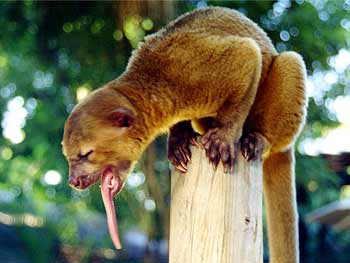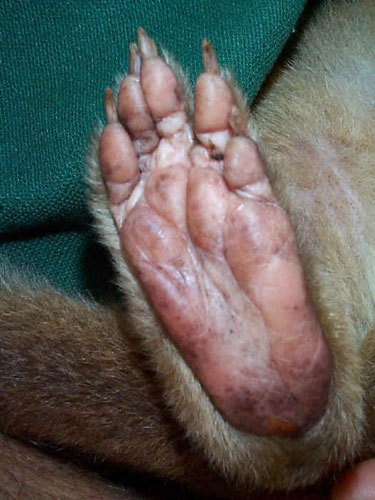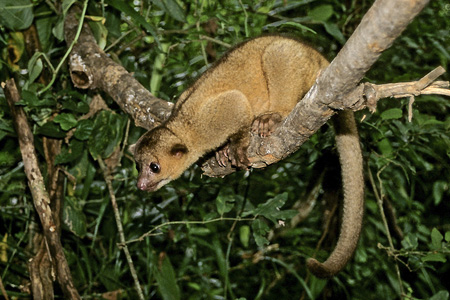
THE KINKAJOU.
SHOULD we be traveling in South America, we might come across an animal that looks very much like the one in the picture. But we need not be afraid to come near ft kinkajou; for the animal sleeps all day, and is very hard to wake up.
Bright light hurts its eyes, and disturbs it more than it does the owl. If it should be waked up in the daytime, it would be quite uneasy until the bright light was gone.
But when night comes, the kinkajou is very lively, running up and down the branches of trees, and every little while coming down to the ground to get a drink.
It makes a low, bleating sound. The kinkajou comes down the tree head first, and keeps from falling by hitching the claws of his hind feet in the bark.
Like the monkey, it can curl its tail around the branches, and help hold itself on. This curious tail helps the animal to climb. It can also hang for some time by its tail and its two hind feet with its head downward.
Its fur is of a dull brown color striped with darker brown, with a dark band around the neck; but these marks are faint, and cannot be seen unless the light is just right.
The kinkajou has a very long and limber tongue, which it can thrust into the smallest cracks after the insects that are sheltered there. It is fond of honey, and uses its tongue in getting the honey out of the bees' wax store-house. If it cannot reach with its mouth the food it wants, it darts out its tongue, or uses its tail to bring these things nearer. It will eat fruit, insects, honey, birds, eggs, and such things.
This curious animal is no larger than a cat, but it is a great deal stronger. In its wild state it is quite fierce, and will even beat off a man if he is not armed It is, however, easily tamed, and likes to play with its friends just as little puppies and kittens do. It is fond of petting and caresses.
W. E. L.


